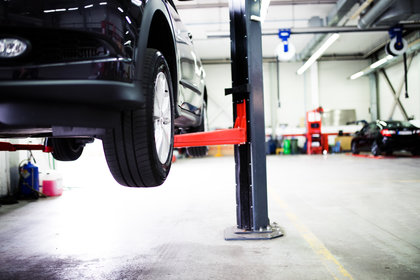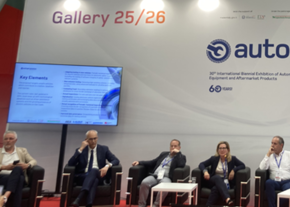
28/06/2021
Fine particulate matter testing adopted by the first European countries
Massimo Brunamonti
A topic of discussion for some time due to the disappointing results in reducing fine particulate pollution despite strict emission limits and the introduction of the Particulate Filter
A topic of discussion for some time due to the disappointing results in reducing fine particulate pollution despite strict emission limits and the introduction of the Particulate Filter (APF). Today finally, after more than three years of testing, the first four European countries have decided to adopt the fine particulate emission test. These are the Netherlands, Belgium, Germany and Switzerland where, between the end of 2022 and the beginning of 2023, particulate emission testing will become mandatory for diesel vehicles subject to MOT inspection.
From a technical point of view, it is quite clear that current opacity testing is proving inadequate to assess the emissions of the latest diesel vehicles. Several studies, including the one developed by the Belgian Goca, show that 80% of the pollution is produced by just 20% of the diesel vehicles on the road, but of this 20% only 0.05% do make it passed the emissions test; obviously there is something wrong. Following the mass adoption of the FAP, emissions are on average well below the limits and this is because currently, the technology of the opacimeters used does not allow to measure the emissions of fine particulate matter, i.e. below 100nm; the conclusion is that opacity testing suitable for older diesel vehicles have little or no use for modern diesel engines, i.e. after Euro 4. The introduction of less polluting vehicles equipped with FAP made sense in terms of significant reduction, at least on paper, of fine particulate emissions. However, this was not the case: as air sampling across Europe shows, fine particulate pollution levels have not decreased by the desired amount. Why? The cause seems to be poor or inadequate maintenance; this is, more or less, the common conclusion of a series of studies conducted in various countries, which show that often, diesel powered vehicles are not properly maintained, with APF filters being removed in some cases.
At this point, the competent authorities, following a riot of driving bans imposed in densely populated areas, were forced to take action. A few years ago a working group, called N-Pti, was set up in Switzerland with the aim of identifying and defining a suitable testing method for fine particulate emissions during MOT tests. The N-Pti group, initially made up of representatives from several European countries, was later joined by representatives of equipment manufacturers and brought the work to completion when, in 2020, emission limits under test were set and the first testing devices ware approved. Therefore, to date, despite the absence of a harmonized European standard, there is a common approach to which the countries mentioned above have adhered and are about to put into force. The European Commission for its part, following the initiative of some member states, has started the process of defining a possible standard or recommendation, entrusting the JRL (Joint Research Laboratory) to prepare a preliminary draft of such a measure.
Other countries, such as Spain, Sweden and Finland, are likewise considering the adoption of the particulate test, while in Italy, unfortunately, to date there is no mention of it. And yet, pollution in Italy is no better than elsewhere: traffic restrictions here and there (see the Po Valley), especially for diesel vehicles, are proving inconvenient for both motorists and transport companies when the pollution situation could be definitely improved simply by following the path chosen by these other countries. Fortunately, the new management at the Motorization General Directorate recently installed, has finally started, after about three years (see Pneurama 2/2021), a phase of assessments of current inspection tests in Italy, in an attempt to make up for lost time and to adapt these inspections to technological and regulatory changes. We sincerely hope that this new phase will introduce a new and effective method of testing and thus prevent further excessive levels of environmental pollution.
From a technical point of view, it is quite clear that current opacity testing is proving inadequate to assess the emissions of the latest diesel vehicles. Several studies, including the one developed by the Belgian Goca, show that 80% of the pollution is produced by just 20% of the diesel vehicles on the road, but of this 20% only 0.05% do make it passed the emissions test; obviously there is something wrong. Following the mass adoption of the FAP, emissions are on average well below the limits and this is because currently, the technology of the opacimeters used does not allow to measure the emissions of fine particulate matter, i.e. below 100nm; the conclusion is that opacity testing suitable for older diesel vehicles have little or no use for modern diesel engines, i.e. after Euro 4. The introduction of less polluting vehicles equipped with FAP made sense in terms of significant reduction, at least on paper, of fine particulate emissions. However, this was not the case: as air sampling across Europe shows, fine particulate pollution levels have not decreased by the desired amount. Why? The cause seems to be poor or inadequate maintenance; this is, more or less, the common conclusion of a series of studies conducted in various countries, which show that often, diesel powered vehicles are not properly maintained, with APF filters being removed in some cases.
At this point, the competent authorities, following a riot of driving bans imposed in densely populated areas, were forced to take action. A few years ago a working group, called N-Pti, was set up in Switzerland with the aim of identifying and defining a suitable testing method for fine particulate emissions during MOT tests. The N-Pti group, initially made up of representatives from several European countries, was later joined by representatives of equipment manufacturers and brought the work to completion when, in 2020, emission limits under test were set and the first testing devices ware approved. Therefore, to date, despite the absence of a harmonized European standard, there is a common approach to which the countries mentioned above have adhered and are about to put into force. The European Commission for its part, following the initiative of some member states, has started the process of defining a possible standard or recommendation, entrusting the JRL (Joint Research Laboratory) to prepare a preliminary draft of such a measure.
Other countries, such as Spain, Sweden and Finland, are likewise considering the adoption of the particulate test, while in Italy, unfortunately, to date there is no mention of it. And yet, pollution in Italy is no better than elsewhere: traffic restrictions here and there (see the Po Valley), especially for diesel vehicles, are proving inconvenient for both motorists and transport companies when the pollution situation could be definitely improved simply by following the path chosen by these other countries. Fortunately, the new management at the Motorization General Directorate recently installed, has finally started, after about three years (see Pneurama 2/2021), a phase of assessments of current inspection tests in Italy, in an attempt to make up for lost time and to adapt these inspections to technological and regulatory changes. We sincerely hope that this new phase will introduce a new and effective method of testing and thus prevent further excessive levels of environmental pollution.








